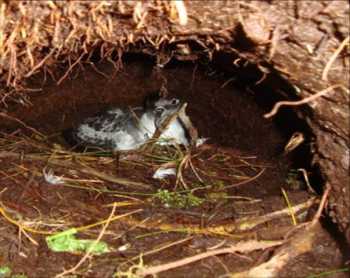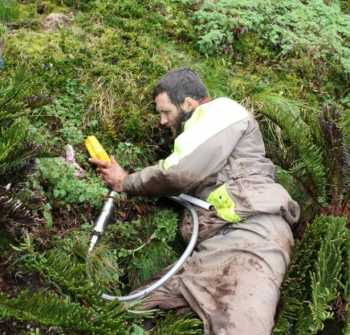Recent research on South Atlantic Gough Island is providing insight into the demographics of ACAP-listed Grey Petrels Procellaria cinerea. Threatened both by drowning on fishery longlines and depredation by introduced mammals, the conservation status of Grey Petrels is a concern and they are recognised as Near Threatened.
Breeding sites are found throughout the Southern Ocean: Tristan da Cunha, Gough, Prince Edwards, Crozets, Kerguelen, Macquarie, Campbell, Antipodes and possibly St. Paul. Census and population trend data are lacking for most of these sites and there is very little information on demographic parameters.
Deaths by long-line fishing alone have been estimated to kill c. 45 000 birds in New Zealand waters in the past 20 years (Shirihai 2007). Grey Petrels are the second-most common species observed killed by New Zealand demersal longline vessels (Waugh et al. 2008). The current pest-eradication campaign on Macquarie hopes to benefit the island's small Grey Petrel population.

On Gough Island, depredation by introduced House Mice Mus musculus is a pressing concern since Grey Petrels are winter breeders. Mouse depredation has been recorded mainly on winter-breeding seabird species on Gough, notably the Tristan Albatross Diomedea dabbenena and the Atlantic Petrel Pterodroma incerta.
As elsewhere, the size and status of the Grey Petrel population on Gough Island is poorly known, but has been reported as being at least 10 000 pairs (Ryan 2007). Current research is focusing on demographic parameters and the impacts of House Mice. After locating active burrows in the montane wet heath areas of Gough, around 500 m a.s.l., burrows are being checked monthly until fledging. Chick survival observed so far has been worryingly low so the study will be continued into the 2011 breeding season.
Researchers using a burrow-scope to view nesting chambers have been challenged by the length of Grey Petrel burrows on Gough. Many burrows are over 2.5 m in length and have a large muddy ‘moat' that often extends a metre into the burrow.

The study is being conducted by the Royal Society for the Protection of Birds and the Percy FitzPatrick Institute, University of Cape Town, with funding from the UK Overseas Territories Environment Programme and the approval and support of the South African Department of Environmental Affairs and the Tristan Conservation Department.
References:
Ryan, P.G. (Ed.) 2007. Field Guide to the Animals and Plants of Tristan da Cunha and Gough Island. Newbury: Pisces Publications.
Shirihai, H. 2007. A Complete Guide to Antarctic Wildlife. The Birds and Marine Mammals of the Antarctic Continent and the Southern Ocean. 2nd Ed. London: A&C Black.
Waugh, S.M., MacKenzie, D.I. & Fletcher, D. 2008. Seabird bycatch in New Zealand trawl and longline fisheries 1998-2004. Papers and Proceedings of the Royal Society of Tasmania 142: 45-66.
Kalinka Rexer-Huber & Graham Parker, Gough Island, 23 July 2010

 English
English  Français
Français  Español
Español